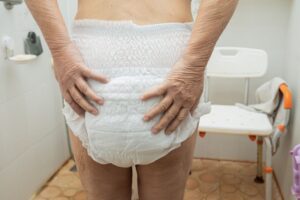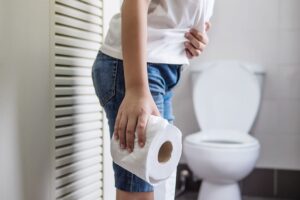Bladder Health and Incontinence in Adults: Causes and Solutions
What Causes Incontinence? Explore Common Triggers
It is a condition that may affect any age group, although it is more prevalent among the elderly. As far as treatment goes, we must delve into what causes incontinence. Various factors, from natural processes of aging to certain medical conditions, become conducive to lower urinary tract symptoms. In this article, we detail various common initiators and how terminal diseases in some individuals worsen urinary problems.
Aging: The Natural Decline in Bladder Control
Among the more prevalent causes of incontinence, one important contributing factor is aging. As we age, the muscles of the bladder become less elastic and weaker. These changes reduce the capacity of the bladder to store urine and shrink its size. This weakening process prevents the bladder from holding much larger amounts of urine; frequent trips are then needed. Sometimes, there is elderly incontinence, wherein the urge to urinate is so strong that accidents happen before making it to the toilet.
Reductions in bladder function may also be related to hormonal changes in the elderly. For example, following menopause, women often have lower levels of estrogen. This can weaken the bladder and urethra and make it harder for a person to hold urine. An enlarged prostate can interfere with the normal flow of urine, causing leaks in men.
Weakened Pelvic Floor Muscles: A Common Issue
Muscles in the pelvic floor enable the body to retain urine. The supporting layer of the pelvic floor consists of these muscles. But for a number of reasons including childbirth, surgery, and aging, these muscles progressively lose strength with time. coughing, sneezing, or weightlifting – heavy lifting The weakened pelvic floor most certainly loses its capacity to control the bladder; stress incontinence results. Usually, this happens when symptoms like coughing, sneezing, or lifting heavy weights generate bladder pressure.
Damage to the pelvic floor muscles is especially common among women following childbirth. Men who have prostate surgery sometimes find their pelvic muscles supporting the bladder weakening.
Medical Conditions: The Impact on Bladder Health
Many medical disorders in older age can cause bladder malfunction, which aggravates urinary issues. Other chronic diseases include diabetes and neurologic diseases, including Parkinson’s disease, Alzheimer’s, or multiple sclerosis, which can actually damage the nerves transmitting the signals between your brain and your bladder. Should these signals fail to pass through correctly, it could be difficult to regulate the sensation of the need for urination, which results in overflow or urge incontinence.
Among those affected with diabetes, for instance, high blood sugar can damage nerves, so impairing the nerves regulating the bladder and so producing the incapacity to sense a full bladder. This frequently causes leaks or difficulty completely emptying the bladder, so aggravating the urinary issues.
Incontinence in People with Terminal Illnesses
For those with terminal diseases, incontinence is a symptom of failing health. A weakening body makes mobility issues, medications, and decreased ability to communicate or control functions highly reduce the capacity to manage elderly incontinence. Certain terminal conditions can involve the affected muscles or nerves in bladder control and make things even more complicated for the patient.
Incontinence can also be a result of cancer, especially of the organs in the pelvis. Treatments involving radiation and chemotherapy can also cause damage to the bladder muscles or irritate its lining, thus causing incontinence. Constipation is exacerbated by the medications taken by patients in the final stages for pain mitigation, which further increases pressure on the bladder and aggravates symptoms.
Medications and Lifestyle Factors
Finally, medications, as well as conditions of life, may exacerbate urinary incontinence. Diuretics given to patients with high blood pressure increase urine output, causing frequency and may also result in leakage. Other drugs, such as sedatives or muscle relaxants, hinder the contraction of the bladder and lead to overflow incontinence.
Other irritating elements to the bladder comprise high intakes of caffeine and alcohol, adding to urinary problems. Smoking, being overweight, or failing to keep a healthy diet is also influenced in terms of bladder health, promoting incontinence.

Symptoms of Urinary Incontinence
There are several ways that urinary incontinence might present itself, and each has unique symptoms. Finding the proper treatment requires knowing the kind of incontinence you are dealing with. The most often occurring forms – including stress incontinence, urge incontinence, functional incontinence, and others – will be broken out below to help you identify the symptoms and search for the relevant remedies.
Stress Incontinence: Leaks with Physical Activity
Stress incontinence results from bladder leakage brought on by harsh pressure. Incontinence of this kind usually results from coughing, sneezing, laughing, or physical exercise. The main complaint is inadvertent urine leaks during times of rising abdominal pressure. Many times following surgery or childbirth, stress incontinence is associated with weak pelvic muscles for many adults. Though it doesn’t produce a continuous urge to urinate, daily activities can set off embarrassing and uncomfortable reactions.
Urge Incontinence: Sudden and Intense Need to Urinate
The hallmark of urge incontinence is a sudden, strong urge to urinate, usually followed by spontaneous leakage before getting to the bathroom. Even at night, people who have urge incontinence feel forced to urinate often. The illness itself is usually associated with an overly active bladder, in which case the bladder muscles contract more frequently than they ought to, causing an urgent and uncontrollable need to urinate. Typical triggers might be drinking small amounts of liquid, hearing running water, or just feeling the bladder full.
Functional Incontinence: Challenges with Mobility or Communication
When a person’s urinary system is operating normally, but other medical problems keep them from reaching the bathroom in time, they are said to be functionally incontinent. Adults with mobility issues, arthritis, or cognitive diseases like Alzheimer’s disease are commonly seen to exhibit this kind of incontinence. Though the need to urinate is acknowledged, the main symptom is the difficulty in reaching the toilet, resulting from physical or psychological disabilities. For instance, someone may find it difficult to unbutton clothes or operate a walker, which would cause mishaps.
Overflow Incontinence: Bladder Overflow and Constant Dribbling
When the bladder does not empty totally, overflow incontinence results. This causes regular urine dribbling even when there is no urge to go. It is sometimes linked to urinary tract blockages, including an enlarged prostate in men or bladder nerve damage brought on by diseases like diabetes. The primary sign of overflow incontinence is the sensation of a full bladder even following urination, which causes minor, consistent leaks all day.
Mixed Incontinence: Combination of Symptoms
Usually, stress incontinence and urge incontinence mixed incontinence is a combination of two or more forms of incontinence, as the name implies. Those with mixed incontinence have symptoms of both types; they may leak during physical activity but also feel a sudden, pressing need to urinate at unannounced times. Managing mixed incontinence calls for treating every set of symptoms in order to arrive at a complete fix.
Incontinence Management: Tips for Improving Bladder Health
Your quality of life can be much enhanced by controlling urinary incontinence and preserving bladder health. Changing your lifestyle and developing good habits will help you greatly, whether your goal is to control current symptoms or prevent incontinence. These are some doable suggestions for maintaining bladder health and enhancing general bladder function improvement:
Practice Pelvic Floor Exercises
Commonly referred to as Kegel exercises, pelvic floor exercises help to strengthen bladder supporting muscles. These discreet daily activities are quite successful in controlling urinary problems including stress incontinence and incontinence in older adults. Frequent Kegels help to increase bladder control and lessen leaks during physical exercise.
Maintain a Healthy Weight
Extra weight can strain the bladder and cause urinary problems including stress incontinence. Diet and exercise help one to keep a good weight, which releases this pressure and enhances bladder function improvement. Bladder leaks can be greatly decreased by even a minor weight loss.
Stay Hydrated, but Avoid Triggers
Bladder infection prevention depends on drinking enough water, but too many bladder irritants can aggravate incontinence problems. Cut back on alcohol, caffeine, and acidic beverages like citrus juices since these can aggravate the bladder and lead to leaks or frequent urination. Stay with water or non-caffeinated herbal teas to maintain bladder function.
Establish a Bathroom Routine
Establishing a regular bathroom schedule can help older adults control incontinence by training the bladder. Though you might not feel the need, try to pee every two to three hours. This can help control bladder function and lower unexpected urges over time. Maintaining a bathroom diary to record urination trends also aids in the identification of leaking causes and patterns.
Use Adult Diaper Solutions or Pads
Adult diaper solutions can offer an additional degree of comfort and security when lifestyle changes by themselves are insufficient. Discreet and very absorbent modern adult diapers and incontinence pads help control leaks without interfering with daily life. Those with limited mobility or those handling incontinence in older adults will find these items especially beneficial.
Prevent Bladder Infections
Bladder infections can worsen urinary issues, so the person needs to leak more urgently. Make sure you are getting enough fluids to clear the urinary tract of germs, supporting bladder infection prevention. Additionally, practice good cleanliness by wiping front to back and urinating following sexual activity to prevent germs from entering the bladder. Furthermore, reducing the risk of infection is achieved by wearing cotton underwear and avoiding tight-fitting clothes.
Incorporate Bladder-Friendly Foods
Retaining bladder health mostly depends on a good diet. Eat foods high in fiber – such as whole grains, fruits, and vegetables – to prevent constipation, which can particularly tax the bladder especially heavily. Foods heavy in vitamins and antioxidants, such as berries, leafy greens, and nuts, also help to maintain bladder health and reduce inflammation.
Avoid Smoking
Considered an irritant for the bladder, smoking can aggravate urinary problems. It also raises the likelihood of a chronic cough, which would strain the pelvic floor muscles excessively and cause stress incontinence. Not only is quitting smoking better for your general health, but it also helps with bladder function.
Seek Medical Advice for Underlying Conditions
See a healthcare provider if you have ongoing or getting worse incontinence symptoms. Bladder function can be compromised by diseases, including diabetes, neurological problems, or prostate concerns. Dealing with these fundamental problems will help to control the bladder and lessen incontinence symptoms.
Consider Bladder Training Techniques
Bladder training entails progressively longer intervals between bathroom trips. Small interval delays in urination help to retrain the bladder to retain more urine and lower leak frequency. Those with overactive bladder or urge incontinence especially benefit from bladder training.
This sensible advice will help you greatly increase bladder health and better control incontinence. Whether your issues are urinary problems personally or incontinence in older adults, using these techniques will help you take control and confidence back into daily life.
Prioritizing Bladder Health for Improved Quality of Life
Understanding and controlling adult incontinence can greatly affect daily life, particularly for those with chronic or hospice diseases. Although the reasons for incontinence range from underlying medical diseases to weak pelvic muscles, knowing these triggers and getting suitable treatment can help regain dignity and comfort. There are ways to control and lessen the effects of urinary incontinence, whether it comes from pelvic exercises, lifestyle modifications, or adult diaper solutions.
Seeking palliative care presents a chance for tailored, compassionate support for those with terminal illnesses. Palliative care teams concentrate on meeting particular needs, including bladder control problems and increasing comfort. Those suffering hospice illnesses can get treatment that not only controls incontinence but also improves general well-being with customized attention. Maintaining bladder health is about enhancing the quality of life, preserving independence, and finding relief in even the most difficult situations – not only about controlling symptoms.




Post Comments